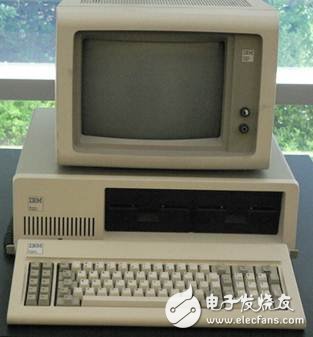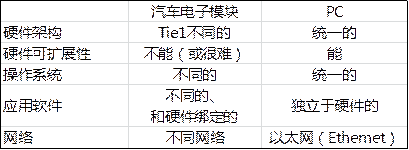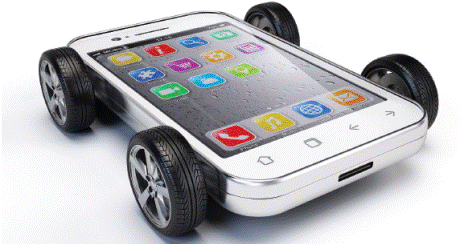This is an electronic and electrical architecture for an intermediate luxury sedan. It is a parallel network of different bandwidth and signal transmission protocols and connected by a gateway. There are CAN (controller area network) and FlexRay. , MOST, LIN, LVDS (Low voltage differenTIal signaling), even the direct connection of analog signals.
In-vehicle electronic networks have tens of thousands of signals sent and received under different transmission standards. Different forms of software run on different hundreds of electronic control modules. The scale of the software has exceeded 100 Mio. How to control such a Complex systems, effectively verifying their overall functionality and safety, while also keeping R&D and vehicle costs within a certain range, is a huge challenge for OEMs.
Let's review the history of Personal Computer. Since IBM invented the PC in August 1981, the hardware architecture of the computer is basically fixed and scalable, with CPU, GPU, and PCI-Bus. There are ports USB, VGA, HDMI, as well as working memory, hard disk or SSD; software, there is an operating system, there are different application software, and the network connecting these PCs is Ethernet (Ethernet).

Figure 2 IBM PC5150
The author here points out that the electronic module of the car has a huge difference from the PC:

Figure 3 Comparison of automotive electronic modules and PCs
In the face of the Internet of Vehicles (V2X), ADAS (advanced driver assistance system), electrification electrification (electrificaTIon), and future autonomous driving markets, the existing automotive electrical and electronic architecture can no longer meet the future. Needs. A large amount of data (radars, lidars, cameras, and various other sensor signals, as well as V2X signals) need to receive, process, and issue corresponding commands to the actuator.
In this regard, the author proposes the following three points:
First: Develop and develop a standard, scalable automotive computer called iPC (vehicle computer)
iPC is like a high-performance, scalable PC with a standard CPU (graphic processing unit), GPU (graphic processing unit), SoC (system on chip), and other scalable AI chips, such as NPU (neuronal network processing). Unit). In 2000, I was also responsible for the powertrain electronic system at the Daimler Group in Germany, and when I was discussing future automotive electronics with my colleagues, I had the prototype of the iPC idea.
The operating system of the iPC can be unified, such as Linux. The iPC's network port is mainly Ethernet (Ethernet), bandwidth 1Gbps to 100Gbps, integrated future 5G mobile network, and I / O port. This is a century-long opportunity for PC and server manufacturing companies and innovative technology companies! It is also the time for the auto electronics industry to reshuffle!
Second: develop and implement automotive Ethernet (automoTIve ethernet)
Ethernet has been widely used in the Internet, personal computers, and industrial automation. The future of China's manufacturing 2025, or German industry 4.0, the Internet of things, they all have a common carrier Ethernet! One of the main obstacles to the automotive network is the application of Ethernet (except for a few applications in multimedia). One of the main obstacles is the real-time capability of Ethernet (real TIme capability).
Ethernet generally waits for a packet to be transmitted for delivery before it can transmit a second packet, so that the control signals for the engine, steering or braking system are not satisfactory. In order to enable Ethernet to be time-trigged, IEEE802.3 sets a standard and can send an express package, which can pause the signal packet in the transmission first, and then deliver the delivery signal packet in real time. The signal pack is suspended to solve the real-time control problem of the engine, steering and braking system. In addition, if PoE (Power over Ethernet) is used, it is possible to directly drive some actuators without applying a wire harness.
Third: develop hardware-independent application software
There are a variety of in-vehicle electronic control modules, because they come from different Tie1, have different hardware, different operating systems, and different application software, which is a very high cost and high risk for OEMs. Very complex integration and verification work.
If you have a car computer iPC, with iPC's unified operating system, you can give software technology companies a huge opportunity to develop hardware-independent application software, like an App, can operate normally in different hardware environments, customers It can even be downloaded according to individual needs (new business model), which allows OEMs to simply integrate, verify, and re-use. Some of my German car OEMs (BBAP) peers also want hardware-independent applications that are easy to develop, re-use, and even switch Tie1.

Figure 4 Development of hardware-independent application software (car-mounted car app)

Figure 5 iPC-based automotive electronic Ethernet
to sum upThe future architecture of automotive electronics will be automotive ethernet.
The author makes three points here:
1) Standardized, scalable on-board computer iPC
2) Unified operating system (such as Linux)
3) Hardware-independent application software
This will be the trend of future car development, bringing new business opportunities to PCs, server manufacturers and technology innovation companies, as well as independent software technology companies. Breaking the monopoly of the system Tie1 is the century opportunity for Chinese component companies!
It is predicted that by 2025, the penetration rate of Ethernet in automotive electronics will exceed 50%, and it will not only bring technology leap, but also reduce cost, light weight and car personalization (iPC app, software update OTA), car A new breakthrough in networking V2X, routing & map via cloud.
European Socket Connector,30 Position European Socket Connector,Right Angle Male European Socket Connector,Male European Socket Connector
Dongguan Yangyue Metal Technology Co., Ltd , https://www.yyconnector.com